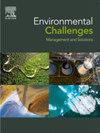Quantitative microbial risk assessment for drinking water intake threat prioritization: a comparison of vulnerability and threat assessment according to source water protection regulations of two Canadian provinces
Q2 Environmental Science
引用次数: 0
Abstract
Source Water Protection in Canada is regulated primarily by provincial governments, leading to a variety of approaches for characterizing threats to drinking water. This paper compares the key elements of vulnerability and threat assessments for microbial contaminants for two Canadian provinces. Drinking water intakes of two municipalities in Quebec and Ontario, Canada, located on opposite sides of a large transboundary river impacted by Combined Sewer Overflow (CSO) discharges were used as a case study to evaluate the two provincial approaches. Québec’s vulnerability classification for microbial contaminants is data driven based on regulatory monitoring (concentrations of Escherichia coli) at the drinking water intake) while that of Ontario’s is model driven and dependent on the physical and hydraulic characteristics of zones around an intake. To establish a quantitative criterion to compare these two threat assessment frameworks, the impacts of a series of CSO events upstream of the drinking water intakes were simulated using a calibrated hydrodynamic and water quality model. Corresponding enteric pathogen concentrations in the intakes were estimated and used as input for Quantitative Microbial Risk Assessment (QMRA) to calculate treatment requirement levels to meet human health targets. Unlike Ontario’s threat assessment approach, Quebec’s approach provides an opportunity to investigate the effectiveness of risk reduction strategies such as an adjustment of the frequency of CSO events or corrective actions to improve treatment. Considering the influence of CSO events on log removal requirements to remain compliant with human health targets permitted the differentiation of CSO risk levels for threat prioritization.
饮用水取水威胁优先排序的定量微生物风险评估:根据加拿大两省水源保护法规进行脆弱性和威胁评估的比较
加拿大的水源保护主要由省级政府管理,导致了各种各样的方法来确定对饮用水的威胁。本文比较了加拿大两省微生物污染物脆弱性和威胁评估的关键要素。魁北克省和加拿大安大略省两个城市的饮用水摄入量位于一条大型跨界河流的两侧,受到联合下水道溢流(CSO)排放的影响,作为一个案例研究,以评估两种省级方法。qubec对微生物污染物的脆弱性分类是基于监管监测(饮用水取水口大肠杆菌浓度)的数据驱动的,而安大略省的分类是基于模型驱动的,依赖于取水口周围区域的物理和水力特征。为了建立一个定量标准来比较这两种威胁评估框架,使用校准的水动力和水质模型模拟了饮用水入口上游一系列CSO事件的影响。估计摄入中相应的肠道病原体浓度,并将其作为定量微生物风险评估(QMRA)的输入,以计算满足人类健康目标的处理要求水平。与安大略省的威胁评估方法不同,魁北克省的方法提供了一个机会来调查降低风险策略的有效性,例如调整CSO事件的频率或纠正措施以改善治疗。考虑到公民安全组织事件对保持符合人类健康目标的日志删除要求的影响,可以区分公民安全组织的风险级别,以确定威胁的优先次序。
本文章由计算机程序翻译,如有差异,请以英文原文为准。
求助全文
约1分钟内获得全文
求助全文
来源期刊

Environmental Challenges
Environmental Science-Environmental Engineering
CiteScore
8.00
自引率
0.00%
发文量
249
审稿时长
8 weeks
 求助内容:
求助内容: 应助结果提醒方式:
应助结果提醒方式:


